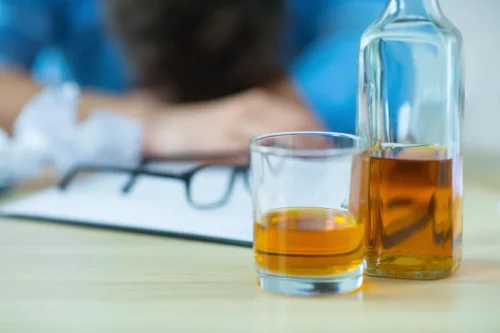

Many of the country’s highest-performing athletes are also part of USADA’s Whereabouts testing pools, which are regularly reviewed and updated in conjunction with recommendations proposed by each sport’s National Governing Body (NGB). These athletes must file Whereabouts information so they can be located for no-notice testing at any time as part of USADA’s test distribution plan. Not surprisingly, hard numbers on rates of usage are difficult to come by, but anecdotal evidence isn’t lacking and anonymous surveys have provided some insight. Questionable use of medications and supplements have also been reported in the U.S. armed forces, fire and police departments, amateur athletics, and even high schools. All data generated or analyzed during this study are included in this published article, its supplementary information files, and publicly available repositories. Lastly, we employed the two-sided Wilcoxon rank sum test with a significance threshold 0.05 to demonstrate the significant performance difference between TransCDR and other compared models.
Additional file 8: Table S5. The top 15 drug-cell line pairs predicted by TransCDR.

However, using the medication when it’s not medically needed can cause blood clots and even death. This can increase a person’s ability to use oxygen because these cells carry oxygen. The NCAA and the Olympics commission have banned some substances because they offer an unfair advantage or can cause harm to the athlete.
- These symptoms are prominent with the use of AASs as well as steroid precursors.
- In fact, studies have reported steroid binding sites on both GABA and the N-methyl-d-aspartate neurons (256).
- AASs also may interact with enzymes involved in neurosteroid metabolism, thereby modulating the action of these neurosteroids, which are known to produce effects on various behaviors (256, 259).
- It can be done through a blood transfusion or through use of drugs like erythropoietin.
- Performance-enhancing drugs create an uneven playing field in sports and can lead to serious health consequences for those who misuse them.
- Also, in human subjects, studies have reported increased aggressive responsiveness to provocation (221).
Reaction from sports organizations

Additional studies have reported increased sensitivity to cocaine (84) and amphetamine (85) in rats exposed to high doses of AAS. Thus, AASs may induce effects on the brain reward system that may render individuals susceptible to other drugs of abuse. Since doping and other forms of cheating have been present throughout the recorded history of sport, it is clear that prohibition is ineffective without systematic detection procedures and enforcement of sanctions. Improvements in drug testing have revolutionized anti-doping initiatives and appear to be reducing the use of drugs, at least among elite international competitors. Unfortunately, the use of AAS and other drugs by noncompetitive bodybuilders, recreational athletes, and school children—groups among whom routine testing is lacking—seems to be growing rapidly.
Step 4. Validating the model

A common rebuttal to this argument asserts that anti-doping efforts have been largely ineffective due to both testing limitations and lack of enforcement, and so sanctioned steroid use would not be markedly different from the situation already in existence. Given the potential financial rewards of athletic success, it’s no surprise that we’ve been witness to a seemingly endless procession of allegations and scandals. The complicity of medical professionals and shadowy labs is often involved, and a 2015 report from the International Cycling Union (UCI) found the sport’s own governing body bore significant responsibility. The implementation of the third scenario demonstrated the significant impact of incorporating pharmacists in the prescribing team on pharmacy profits. Therefore, it is advisable to establish guidelines and regulations mandating the involvement of pharmacists in the prescription dispensing process. Article 2 of the Law on Medical, Pharmaceutical, Food, and Beverage Regulations designates the pharmacy’s technical manager responsible for medication dispensation.
- The reader should know that anabolic steroids are synthetic substances derived from testosterone and are also called anabolic-androgenic steroids (AASs) or just “steroids.” Steroid precursors also are used as performance-enhancing agents.
- Cocaine is an addictive and potent drug derived from the leaves of the coca plant.
- Rhodes (2002, 2009) saw the goal of understanding risk environments as the production of enabling environments in which harm reduction occurs.
- Modafinil was added to the list of prohibited substances on 3 August 2004, ten days before the start of the 2004 Summer Olympics.
With the ever-mounting pressures faced by athletes, it is not surprising that drug abuse by athletes exists across essentially all sports and age groups. WADA revises and publishes its list of banned substances approximately annually. It specifies those banned substances and methods that are prohibited at all times (both in-competition and out-of-competition) because of their potential to enhance performance in future competitions or their masking potential, and those substances and methods that are prohibited in-competition only. Elite athletes competing at international and national levels are subject to standardized anti-doping guidelines under the auspices of WADA and related national organizations. WADA is the international independent agency that publishes the World Anti-Doping Code, which is the document harmonizing anti-doping policies in all sports and all countries.61 The Code was first adopted in 2003 and became effective in 2004. When used for this athletic or muscle-building purposes, anabolic steroids are considered performance-enhancing drugs (PEDs), while their illegal use is referred to as “doping.”

Erythropoietin (EPO) is largely taken by endurance athletes who seek a higher level of red blood cells, which leads to more oxygenated blood, and a higher VO2 max. An athlete’s VO2 Performance Enhancing Drugs max is highly correlated with success within endurance sports such as swimming, long-distance running, cycling, rowing, and cross-country skiing. EPO has recently become prevalent amongst endurance athletes due to its potency and low degree of detectability when compared to other methods of doping such as blood transfusion. While EPO is believed to have been widely used by athletes in the 1990s, there was not a way to directly test for the drug until 2002 as there was no specific screening process to test athletes .
- It aims to protect the integrity of sport and promote clean and fair competition.
- Large doses of the male hormone cause the body to produce additional estrogen.
- But with consistent creatine use, weight gain is more likely from water retention than an enhancement in muscle mass.
- By altering cells with reporter proteins under regulation of androgen response elements, these assays can detect androgen receptor activation regardless of its source6.



